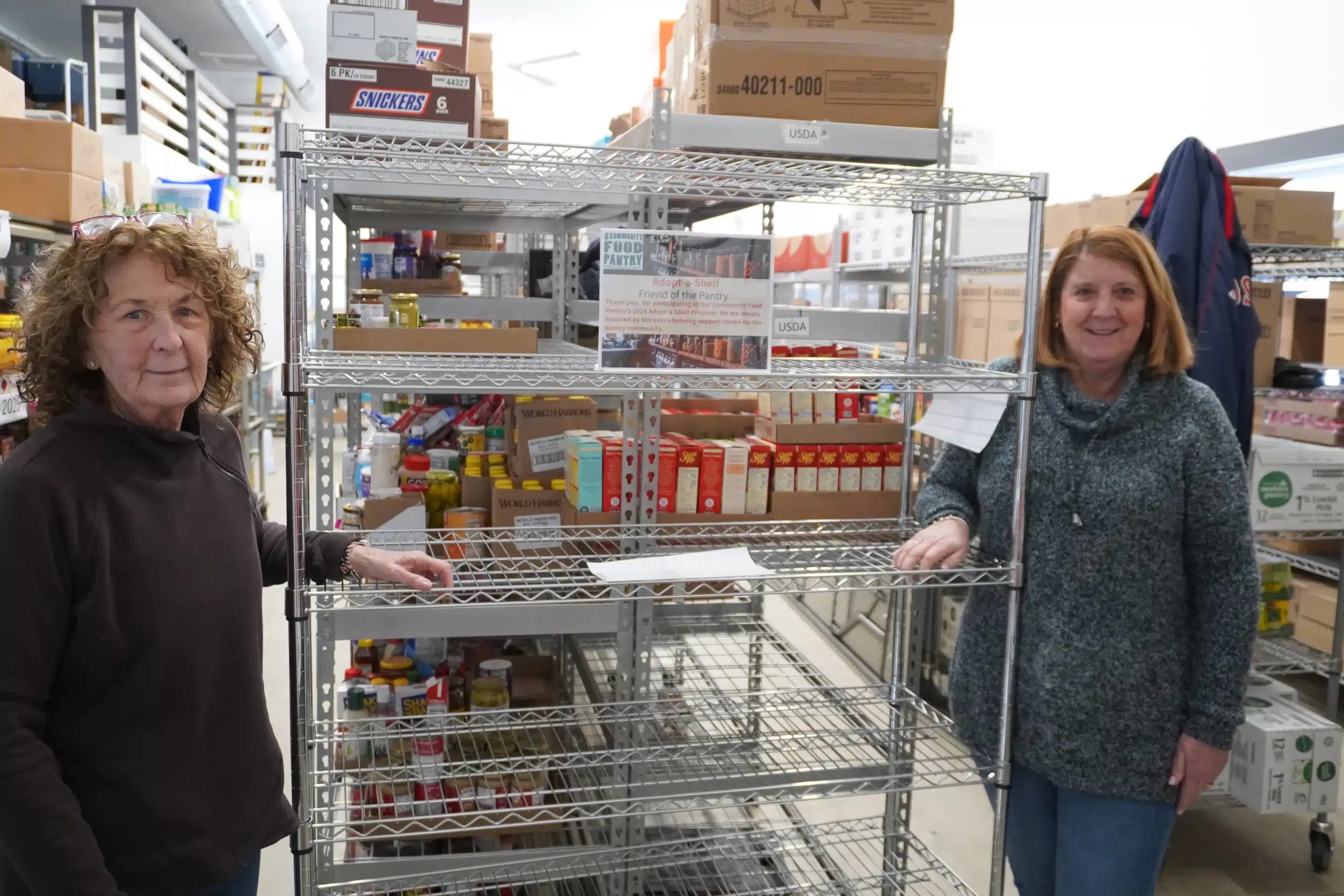Assistant Director Meg Raggio (left) and Director Sally Munson with Our Community Food Pantry are asking for the community’s help to stock this shelf with items its needs for its clients.
Reminder Publishing photo by Cliff Clark
SOUTHWICK — When Our Community Food Pantry’s Director Sally Munson and Assistant Director Meg Raggio, heard the Trump administration was canceling funding for more than $12 million in food aid for the commonwealth, alarm bells went off, but “thankfully,” they said it was a false alarm.
“Thankfully, it’s not really affecting us, yet,” Munson said.
The Trump administration recently announced the U.S. Department of Agriculture was eliminating over $1 billion in funding that helps schools and food banks with their food needs.
After learning about the elimination, the pantry’s Board of Directors’ President Kathlyn Cook reached out to the Food Bank of Western Massachusetts, the pantry’s largest food supplier, to find out what the impact might be.
The Food Bank provides nearly 2,000 pounds of food each week to the pantry and is charged by the pound, which can be as little as 20 cents per.
The Food Bank responded that of the two programs being eliminated by the USDA, only the Local Foods for Schools program would be affected and that it wouldn’t hurt Our Community Food Pantry, but it might affect others.
That program allows school to buy food directly from farmers for school meals, according to a letter sent to Cook from Michelle Geoffrey, the Food Bank’s agency relations manager.
That means farmers who are now planning their growing season and were expecting local schools to purchase their produce now don’t have a guaranteed buyer, and that would “definitely impact” them, said Geoffrey.
“If your program has the budget to purchase from local farms, this year would be a good time to do that,” Geoffrey said.
Munson said the pantry uses several local sources for produce and believe they have enough for now.
Big Y and Stop & Shop are the pantry’s major suppliers of produce. Nearly every day Munson and Raggio go to the two grocery stores and pick up items that have not yet expired but have obvious imperfections that make them less likely to be chosen by a consumer.
For the most part, the pantry doesn’t have to pay for those items, Munson said, but added that often there isn’t enough of that produce for the 135 families the pantry helps each week.
That is the primary reason the pantry asked local gardeners to “Plant a Row” program for the pantry each summer.
Last year, 11 gardeners participated in the program and delivered over 2,000 pounds of produce for the pantry’s clients.
And she said the need continues to grow.
“We’ve been busier than ever,” she said.
Since January, the pantry has had 28 new families apply for assistance, Munson said.
“Food prices are through the roof and it’s tough for some families to make ends meet without this assistance,” she said.
A lot of the produce being sold now is not by the pound but by the item.
As an example, she said sweet yellow peppers are often sold individually for a $1.
Sadly, she said, there are former donors to the pantry that have become clients.
In an effort to generate additional food donations, the pantry recently added a link to its website and its Facebook page to an Amazon Wishlist where food donations can be purchased and shipped directly to the pantry.
While the pantry appears to be safe now from any cuts at the federal level, Munson did say the state’s Healthy Incentive Program has been changed.
The programs allows anyone with an EBT card to purchase up to $20 of produce from farmers markets and farm stands per month and that $20 is then added back to their account. Munson said it was $40 until recently.


